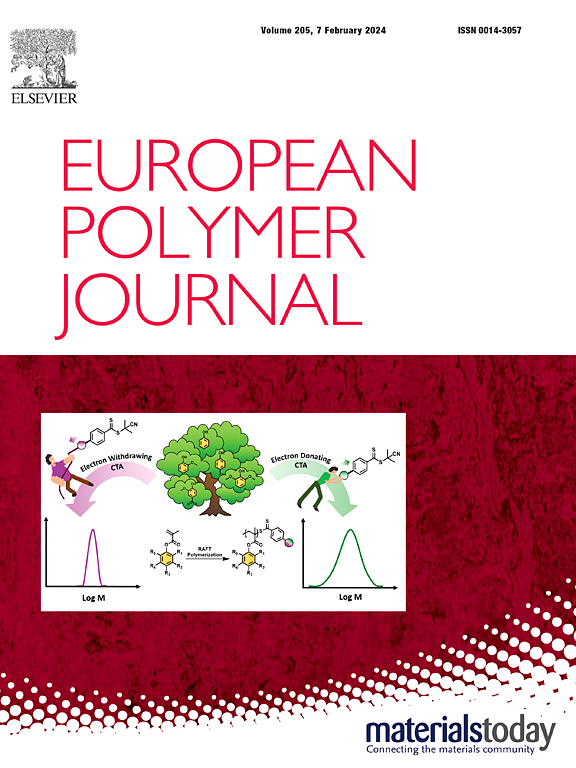Expanding the horizons of polymer engineering: Advances in PDMS modification through RDRP techniques
IF 5.8
2区 化学
Q1 POLYMER SCIENCE
引用次数: 0
Abstract
Polydimethylsiloxane (PDMS) constitutes one of the most interesting representants of the silicones, with application in numerous fields, including biomedicine or microprinting, due to its flexibility, excellent transparency and biocompatibility. For this reason, the development of the PDMS-based materials continue to abide. To fully expand the PDMS potential, reversible deactivation radical polymerization (RDRP) methods are being employed to achieve di- and triblock copolymers or cross-linked PDMS films modified with polymer brushes, attributing new, unique features, such as marine antifouling, self-polishing properties, pH-sensitivity or increased durability of the coatings. Following the current trends in the material engineering of designing smart materials, the superior performance of the newly developed materials for controlled drug delivery, gas sorption, photocatalysts and many others was presented. Thus, this review does not only summarize the recent advances in the PDMS materials functionalization via RDRP techniques, but also raises a crucial question whether PDMS, although already used for several decades, may yet become the material of the future.

求助全文
约1分钟内获得全文
求助全文
来源期刊

European Polymer Journal
化学-高分子科学
CiteScore
9.90
自引率
10.00%
发文量
691
审稿时长
23 days
期刊介绍:
European Polymer Journal is dedicated to publishing work on fundamental and applied polymer chemistry and macromolecular materials. The journal covers all aspects of polymer synthesis, including polymerization mechanisms and chemical functional transformations, with a focus on novel polymers and the relationships between molecular structure and polymer properties. In addition, we welcome submissions on bio-based or renewable polymers, stimuli-responsive systems and polymer bio-hybrids. European Polymer Journal also publishes research on the biomedical application of polymers, including drug delivery and regenerative medicine. The main scope is covered but not limited to the following core research areas:
Polymer synthesis and functionalization
• Novel synthetic routes for polymerization, functional modification, controlled/living polymerization and precision polymers.
Stimuli-responsive polymers
• Including shape memory and self-healing polymers.
Supramolecular polymers and self-assembly
• Molecular recognition and higher order polymer structures.
Renewable and sustainable polymers
• Bio-based, biodegradable and anti-microbial polymers and polymeric bio-nanocomposites.
Polymers at interfaces and surfaces
• Chemistry and engineering of surfaces with biological relevance, including patterning, antifouling polymers and polymers for membrane applications.
Biomedical applications and nanomedicine
• Polymers for regenerative medicine, drug delivery molecular release and gene therapy
The scope of European Polymer Journal no longer includes Polymer Physics.
 求助内容:
求助内容: 应助结果提醒方式:
应助结果提醒方式:


